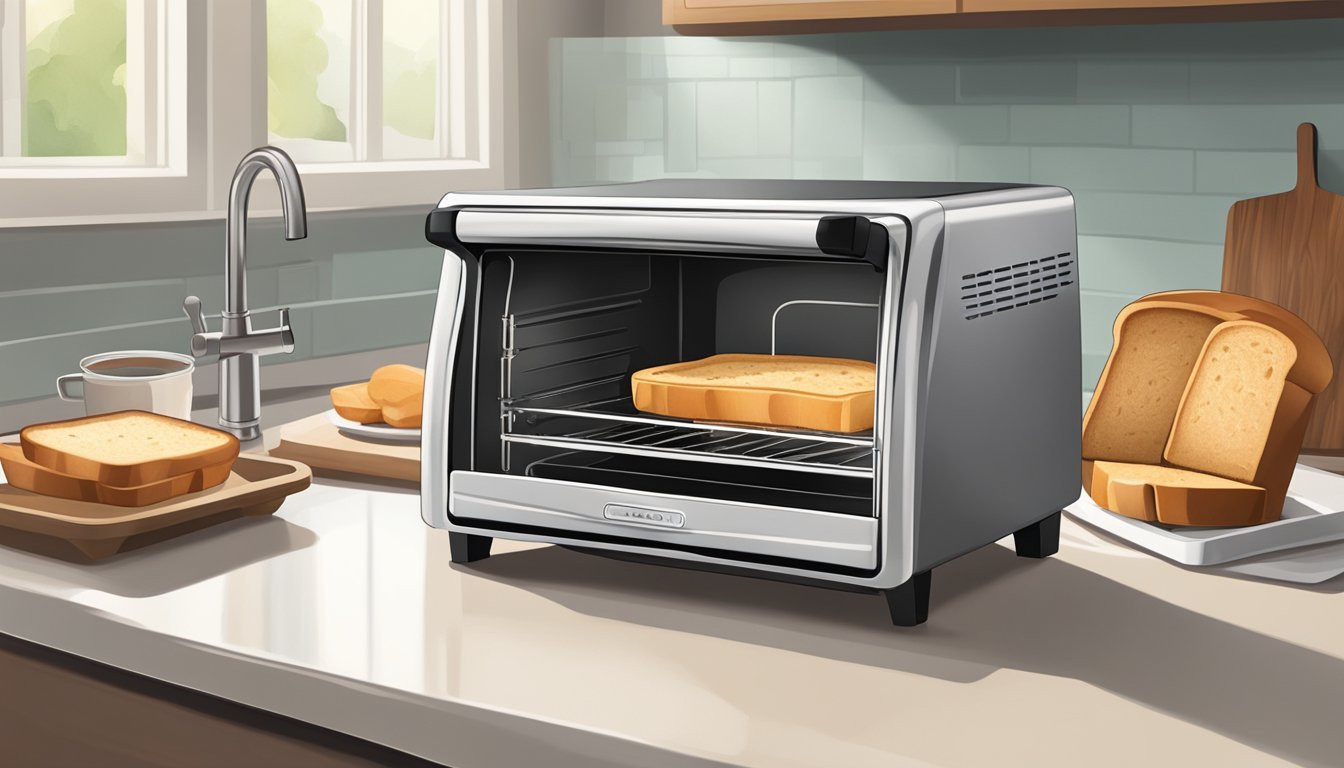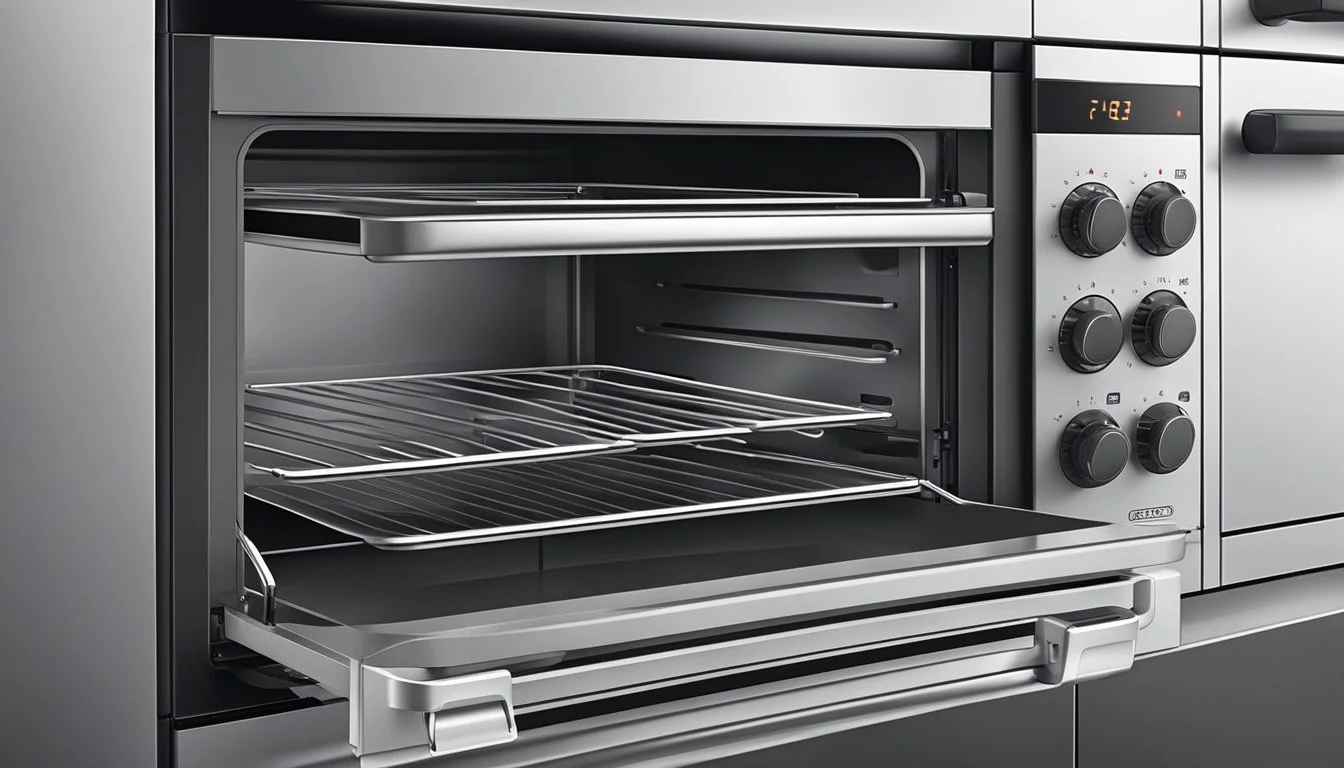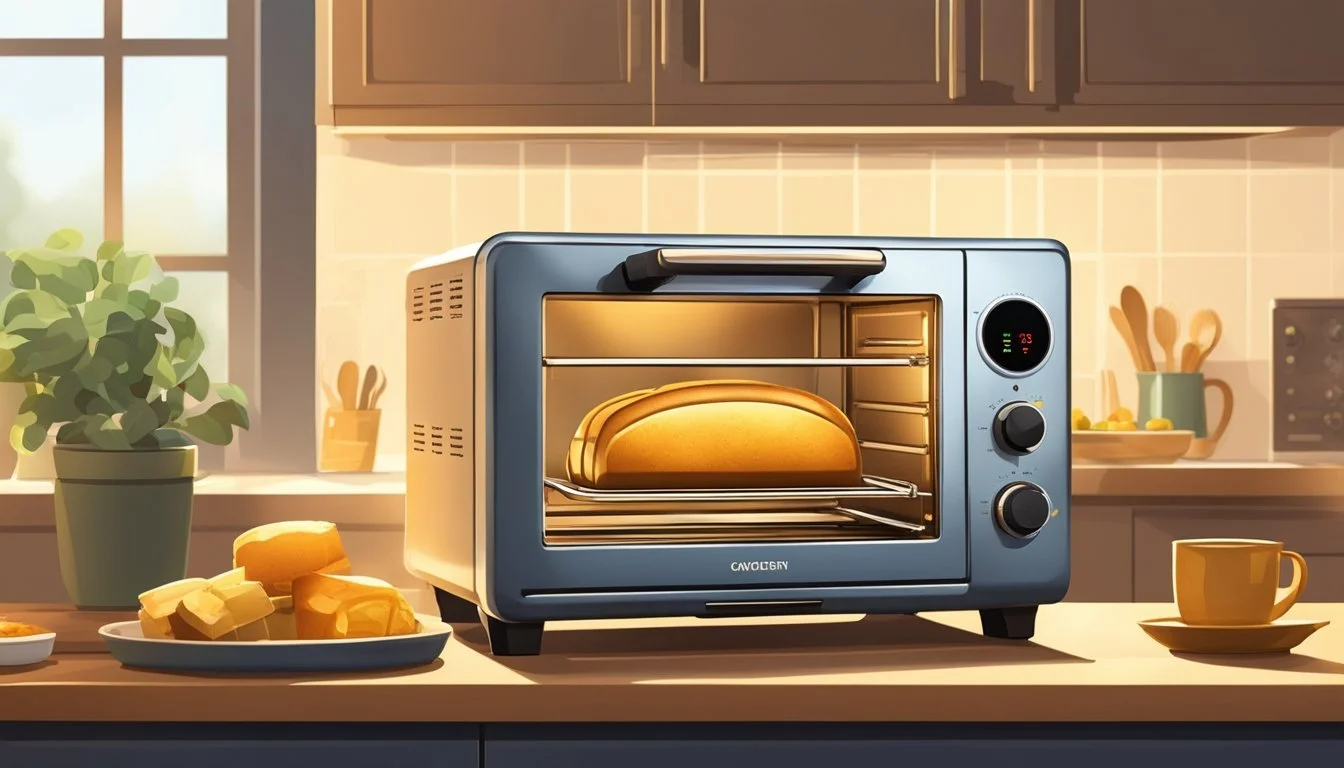How to Make the Most of Your Toaster Oven
Tips for Efficient Cooking
A toaster oven is a remarkably versatile kitchen appliance, often underestimated in its utility. While many may relegate it to the simple task of toasting bread (how long does bread last?), its capabilities extend far beyond. With the ability to bake, roast, and even broil, a toaster oven can handle a multitude of culinary tasks, making it an essential tool for both the casual cook and the culinary enthusiast. Its compact size and quicker heating time not only make it a convenient option for small-batch cooking but also an energy-efficient alternative to a conventional oven.
Understanding the functions and features of a toaster oven is key to unlocking its full potential. By manipulating the various settings, such as temperature control and timer adjustments, users can achieve precise cooking results. A common piece of advice is to position food in the middle rack to promote even cooking, and when using multiple racks, to rotate the pans to ensure uniform heat distribution. Moreover, leaving space around the food allows hot air to circulate effectively, contributing to a consistent finish.
Employing a toaster oven for more than mere toasting opens up a world of culinary possibilities, from roasting vegetables to perfection to baking personal-sized pizzas with a delightfully crisp crust. Clever use of accessories, such as muffin pans or baking dishes, further expands its repertoire, enabling the creation of miniature quiches or tempting meatloaves. Users can experiment with a variety of ingredients to craft meals that are both delicious and tailored to the appliance's unique cooking qualities.
Understanding Your Toaster Oven
A thorough understanding of one's toaster oven functionalities and types enhances cooking efficiency and ensures optimal usage.
Different Types of Toaster Ovens
Toaster ovens come in various models, each designed to fit specific cooking needs and kitchen sizes. Standard toaster ovens are compact and suitable for small tasks like toasting and baking. Convection toaster ovens boast a built-in fan that circulates hot air, ensuring even cooking and reduced cooking times. They are ideal for tasks requiring consistent heat distribution, like roasting meats or baking cookies.
Capacities of toaster ovens vary, with common options ranging from 10 to 60 liters. Consumers must consider the oven size in relation to the food quantities they plan to prepare. Some models feature a rotisserie function, enhancing the oven’s versatility, especially for cooking poultry.
Toaster Oven Settings and Controls
Toaster ovens are equipped with multiple settings to cater to different cooking methods. Here are common settings found on most toaster ovens:
Bake: Standard mode for cooking a variety of dishes evenly.
Broil: Provides high heat from the top element for browning or melting.
Toast: Offers even toasting of bread and other items.
Warm: Keeps food at a consistent, low temperature until ready to serve.
Additionally, some toaster ovens may include settings such as:
Setting Function Defrost Thaws and prepares frozen food for cooking Reheat Warms up leftovers without overcooking
Understanding the controls, which typically include temperature dials, timer knobs, and function selectors, is key for precise cooking. To maximize toaster oven use, one must familiarize themselves with the specific settings and how they influence different foods.
Maximizing Efficiency
To make the most of a toaster oven, one must leverage its size and features for energy conservation. Small adjustments can yield significant savings without compromising on cooking quality.
Energy-Efficient Tips for Toaster Ovens
Size Matters: Given its compact size, a toaster oven heats up quickly and requires less energy compared to traditional ovens. Users should opt for this appliance for small to medium cooking tasks to save energy.
Preheat Prudently: A toaster oven typically reaches the desired temperature faster, reducing the need to preheat for a long time. If the recipe allows, one can even start cooking without preheating.
Utilize Convection: If the toaster oven has a convection feature, using it can cut down cooking time and temperature, which contributes to less energy consumption.
Cooking in Batches: When cooking multiple items, it's more energy-efficient to do so in batches than using multiple cooking appliances simultaneously.
Regular Maintenance: Keeping the toaster oven clean and ensuring the door seal is tight prevents heat loss, thus maintaining energy efficiency.
Strategic Positioning of Racks and Pans: To ensure even cooking and to avoid the need for longer cooking times, it is suggested to place pans on the middle rack when possible and to rotate pans during cooking if using multiple racks.
Users who adopt these energy-efficient tips will not only maximize their toaster oven's capability but align their cooking habits with energy-saving practices.
Maintenance and Cleaning
Maintaining and cleaning a toaster oven regularly ensures its efficiency and longevity. Proper care prevents the build-up of grease and food particles which could become a fire hazard.
Regular Cleaning Routine
For day-to-day maintenance, one should:
After each use: Empty the crumb tray.
Weekly: Wipe the interior with a mixture of water and mild detergent, avoiding the heating elements.
Frequency Task Daily Remove crumbs from crumb tray. Weekly Wipe interior surfaces gently.
Deep Cleaning Your Toaster Oven
A thorough cleaning should be done approximately every few months, or as needed:
Unplug the toaster oven: Safety first.
Remove trays and racks: These components should be soaked in warm, soapy water and then scrubbed with a non-abrasive sponge or brush.
Clean the interior: Create a mixture of warm water, vinegar, and dish soap. Use this solution with a soft cloth to wipe down the inside, avoiding the heating elements.
Tackle tough spots: A melamine sponge can help remove baked-on grease, but use gentle pressure to avoid scratches.
Remember to clean the glass door with a vinegar solution to remove grease and ensure clear visibility.
Toaster Oven Cooking Basics
Toaster ovens are versatile appliances that can bake, broil, toast, and roast, allowing anyone to prepare a variety of dishes efficiently. To ensure successful cooking experiences, it is crucial to understand the process of preheating and to utilize the appropriate tools and accessories.
Preheating Your Toaster Oven
Preheating is a fundamental step in toaster oven cooking, particularly when baking or roasting. It ensures that food cooks evenly from the moment it enters the oven. Most models require preheating for just a few minutes. For instance, to achieve perfectly toasted bread, one might preheat the toaster oven to 450°F before adding the bread. On the flip side, for baked goods like cookies, a common practice is to set the temperature to 350°F before placing them inside.
Step 1: Turn the toaster oven to the desired cooking function (bake, broil, roast).
Step 2: Set the temperature according to the recipe requirements.
Step 3: Allow the toaster oven to reach the set temperature. Indicator lights or a beep often signal that preheating is complete.
Essential Cooking Tools and Accessories
The right accessories can make a significant difference in toaster oven cooking. In addition to the oven rack that comes standard with most toaster ovens, here are a few tools that can help enhance the cooking experience:
Baking Pans: Small baking pans are necessary for items like cookies or mini casseroles.
Broiling Tray: A broiling tray is useful when broiling meats or vegetables to allow for proper air circulation.
Oven Mitts: To safely handle hot pans, a pair of oven mitts is essential.
Thermometer: For precision cooking, especially for meats, an oven-safe thermometer can ensure the right internal temperature is achieved.
By utilizing appropriate tools and understanding how to properly preheat the toaster oven, one can embark on a variety of cooking ventures, from toasting bread to roasting a chicken breast, with confidence and success.
Creating Delicious Meals
The versatility of the toaster oven makes it an ideal appliance for whipping up an array of delicious meals, from a hearty breakfast to a satisfying dinner. It's perfect for small-batch cooking, which allows for a quicker and more energy-efficient meal preparation.
Breakfast Delights
Toaster ovens excel at creating warm and satisfying breakfast dishes. A popular breakfast option is the hash brown and egg casserole, which combines eggs, sausage, hash browns, and cheese into one delicious morning meal. It can be assembled the night before, making morning prep a breeze. For a sweet start to the day, one might opt for cinnamon toast, elevated with a sprinkle of sugar, a dash of cinnamon, orange zest, and a hint of vanilla for an aromatic and flavorful twist.
Lunchtime Favorites
Moving into midday meals, the toaster oven can be utilized to create lunchtime favorites such as pizza bagels (how long do bagels last?) and toaster oven quesadillas. Pizza bagels provide a quick and customizable option, while toaster oven quesadillas allow for a variety of fillings, from cheese and beans to chicken or vegetables, melted to perfection within minutes.
English Muffin Pizzas:
Split an English muffin and top with pizza sauce, cheese, and preferred toppings.
Bake in the toaster oven at 350°F for about 10 minutes until the cheese is bubbly.
Dinners and Small Meals
For dinner or small meals, the toaster oven continues to shine with its capability to roast, bake, and broil. A savory cheddar chicken potpie can be easily adapted for the toaster oven, whether you decide to make it with a crust or serve it as a chowder with added milk. Due to its compact size, the toaster oven heats up quickly and is perfect for roasting garlic or baking polenta bites, providing a flavorful accompaniment to any main course.
Toaster Oven Roasted Garlic:
Cut the top off a bulb of garlic, wrap in foil leaving the top exposed.
Bake at 400°F for 40 minutes for a tender, sweet garlic perfect for spreads or seasonings.
Savory Snacks and Sides
To master the art of using a toaster oven, one can create an array of savory snacks (What wine goes well with savory snacks?) and sides that are both wholesome and satisfying. These delicious options are geared towards enhancing the flavors of vegetables and reimagining classic quick bites like grilled cheese and quesadillas, providing convenience without compromising on taste.
Vegetable Side Dishes
Roasted Vegetables: A toaster oven is ideal for roasting vegetables to achieve a caramelized exterior with a tender interior. One can consider:
Roasted Broccoli: Toss broccoli florets with olive oil, salt, and pepper. Roast at 400°F for 15-20 minutes.
Roasted Brussels Sprouts: Halve Brussels sprouts, and mix with olive oil, garlic powder, and a pinch of salt. Roast at 375°F for 25-30 minutes until crispy.
Roasted Cabbage Wedges: Slice cabbage into thick wedges, brush with oil, season with salt, and roast at 375°F for 20-25 minutes or until the edges are browned.
Roasted Sweet Potato Rounds: Cut sweet potatoes into rounds, coat with olive oil and your choice of spices, and roast at 425°F for 20 minutes, flipping halfway through.
These dishes offer a healthy and flavorful side or snack that can accompany any main course or stand on their own.
Quick and Easy Snacks
Convenient Comfort Foods: For those looking for a quick bite, the toaster oven serves as a swift cooking tool for classic snacks:
Grilled Cheese: Assemble your sandwich with your favorite cheese and bread. Butter the outside and cook in the toaster oven at 425°F for about 5-10 minutes, until cheese is melted and bread is golden.
Quesadillas: Place a tortilla filled with cheese and optional vegetables or protein on a baking tray. Cook at 400°F for about 10 minutes, flipping once, until the cheese is bubbling and the tortilla is lightly browned.
Garlic Bread: Spread butter and minced garlic, or garlic powder, on slices of bread. Bake at 350°F for about 10 minutes until toasty and fragrant.
Incorporating these quick snacks into your repertoire can elevate your toaster oven experience and satisfy cravings efficiently.
Baking and Sweets
A toaster oven is not just for toasting bread; it's an indispensable tool for creating delectable baked goods and indulgent sweets. From flaky pastries to rich desserts, one can leverage the compact heat environment for consistent and delicious results.
Baking Pastries and Bread
For those who love a good pastry, toaster ovens are ideal for baking flaky treats like cinnamon toast or biscuits. The contained space facilitates even heating, ensuring a perfect golden-brown finish without the need for a full-sized oven. Here's a brief guide to ensure toothsome outcomes:
Preheat the toaster oven to the appropriate temperature, usually around 325-350 degrees Fahrenheit.
For bread-like pastries, opt for the 'bake' setting to promote an even rise and texture.
Baking times may be shorter in a toaster oven, so it's prudent to check pastries a few minutes before the usual time.
Macaroons, due to their delicate nature, also benefit from the even baking a toaster oven provides. For chewy, perfectly toasted coconut macaroons, the steps are straightforward:
Prepare your macaroon batter following your favorite recipe.
Place small mounds of the mixture onto a toaster-oven-safe baking sheet.
Bake at a lower temperature (around 325 degrees Fahrenheit) until the macaroons are lightly golden and set.
Indulgent Desserts
The confined space of a toaster oven makes it superb for creating indulgent desserts like mini cakes or brownies that cater to sweet cravings without surplus leftovers. Here are essential tips for impeccable toaster oven sweets:
Utilize miniature baking dishes compatible with toaster oven dimensions.
Because of closer proximity to the heating elements, start checking for doneness slightly earlier than the recipe recommends.
If making small batches of cookies, ensure they are spaced evenly on the tray to prevent uneven baking.
Toaster ovens maintain a stable heat that is particularly beneficial for desserts that require gentle cooking, such as custards ((how long do custards last?)) or cheesecakes, saving energy and kitchen space. Whether it's a weeknight treat or a small gathering, one can bake a range of satisfying desserts with ease and precision.
Advanced Toaster Oven Techniques
Mastering advanced techniques in toaster oven cooking can elevate the quality of dishes ranging from savory meats to delectable baked goods. Understanding the nuances of broiling and convection baking can make a significant difference in the outcome of recipes.
Broiling Meats and Seafood
Broiling in a toaster oven is an ideal way to cook meats and seafood quickly while achieving a delicious caramelization or char that adds depth to the flavor. Here's how to effectively broil in a toaster oven:
Preheat the toaster oven to the broil setting, keeping the temperature high, usually around 500°F (260°C).
Position the oven rack close to the top heating element but leave enough space to prevent charring, typically around 3 to 4 inches.
Example: To broil miso-glazed salmon, one should:
Preheat the toaster oven on the broil setting.
Prepare the glaze by combining miso paste, a bit of sugar, and soy sauce, then apply it to the salmon fillet.
Place the salmon on the broiler pan and cook for about 8-10 minutes until the glaze is bubbly and the edges start to char slightly.
Exploring Convection Baking
Convection baking adds a new dimension to using a toaster oven by circulating hot air, allowing for even browning and faster cooking times.
Set your toaster oven to convection bake mode and reduce the recipe’s suggested temperature by 25°F (14°C).
Arrange the food in a single layer on the baking sheet or pan to ensure uniform heat distribution.
Example: For baked sweet potatoes, one should:
Lower the typical baking temperature to about 375°F (190°C) if using the convection setting.
Poke holes in the sweet potatoes to allow steam to escape.
Bake for approximately 45-60 minutes until they are tender and the skin is slightly crisp.
By using these techniques, cooks can harness the full potential of their toaster ovens for creating broiled and convection baked dishes with professional-grade results.
Seasonings and Flavors
The judicious use of seasonings can transform the simplest toaster oven recipes into culinary delights. This section explores how to amplify the taste of dishes with seasonings, as well as how to create flavorful spreads and sauces that can be coupled with various toaster oven meals.
Enhancing Taste with Seasonings
In the world of toaster oven cooking, seasonings are crucial for adding depth and complexity to dishes. The small space of a toaster oven can intensify flavors, making it important to strike the right balance.
Sesame Seeds: Toasted sesame seeds add a nutty essence and a delightful crunch. They can be sprinkled over bread or bagels before toasting, or over vegetables and proteins before roasting.
Mozzarella Cheese: With its delicate, milky flavor, mozzarella cheese is excellent for topping pizzas and casseroles, melting beautifully under the toaster oven's broiling function.
Plain Greek Yogurt: Using plain Greek yogurt in marinades tenderizes meats and adds a tangy kick. It can also be used to create a creamy base for spreads, contributing both flavor and texture.
Using these ingredients in moderation can enhance the profile of a dish without overwhelming the primary flavors.
Recipes for Flavored Spreads and Sauces
Flavored spreads and sauces are an easy way to elevate a meal made in a toaster oven. They can be spread on bread antes de toasting or used as condiments for a finished dish.
Mozzarella Cheese Spread: Combine melted mozzarella cheese with herbs and a touch of garlic to create a rich spread for toasted bruschetta.
Sesame Seed Sauce: Blend toasted sesame seeds with soy sauce, garlic, and a hint of honey for an Asian-inspired sauce that pairs well with roasted meats (What wine goes well with roasted meats?) and vegetables.
Preparing these simple yet impactful seasonings and sauces will allow individuals to enjoy a multitude of flavors from just a few ingredients.





